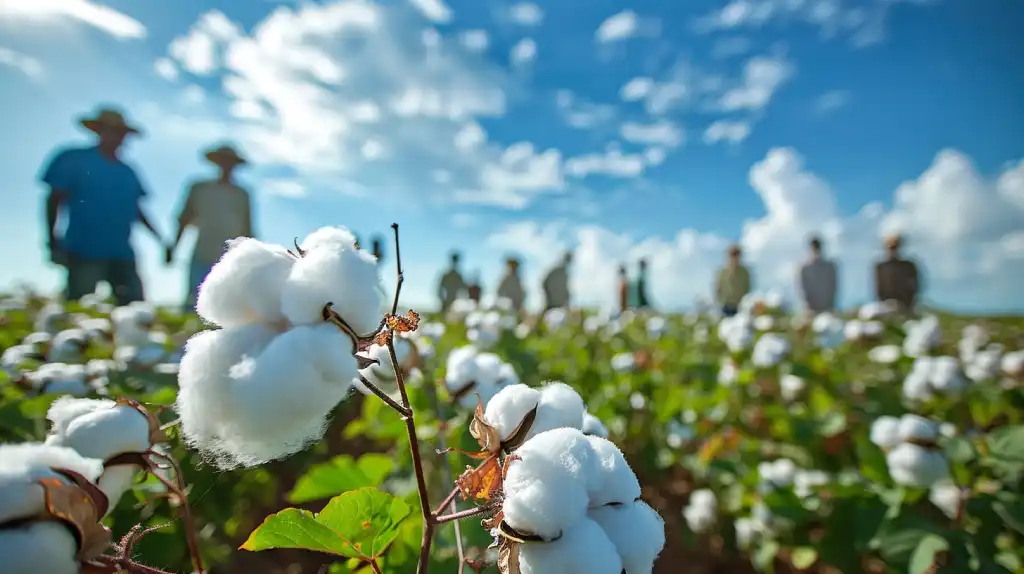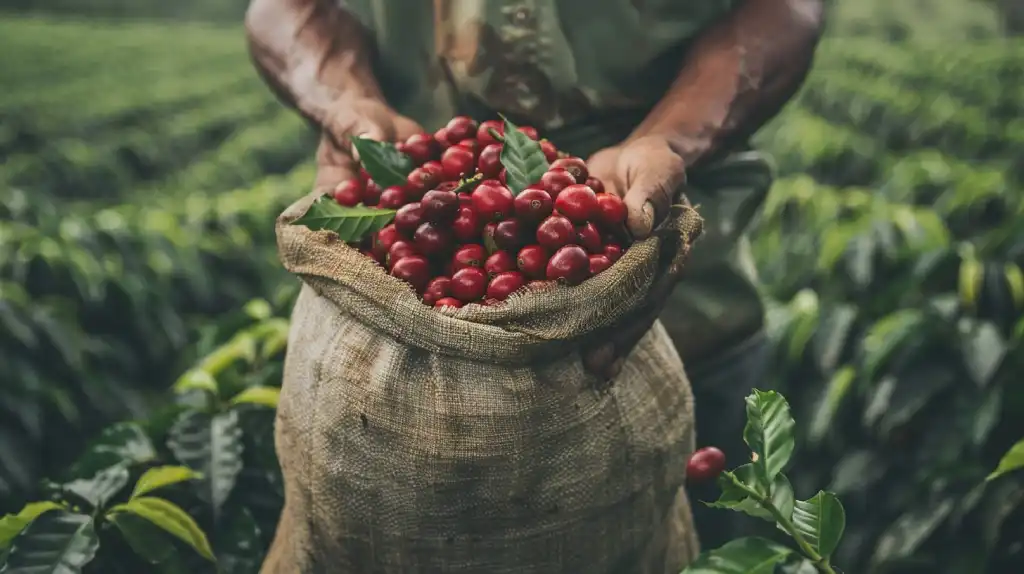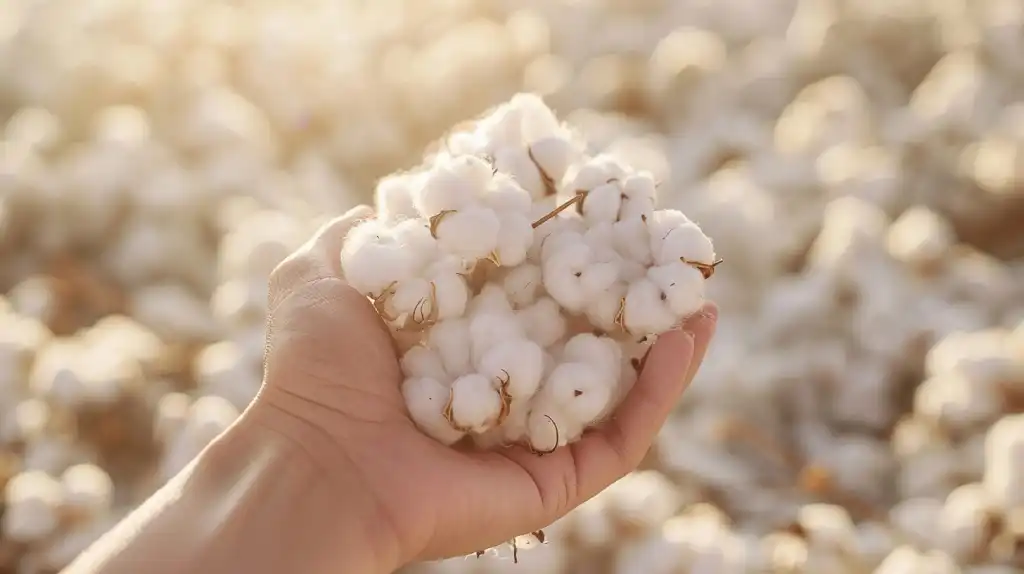Cash crops are grown mainly for sale and profit rather than personal use. They are vital for global economies and can vary significantly by region. Here are three interesting facts:
- Global Production Value: In 2022, the global market value of cash crops was estimated to be over $1.5 trillion.
- Economic Contribution: In countries like India, cash crops account for more than 20% of the agricultural GDP.
- Employment Impact: Cash crop farming provides employment for millions, with around 200 million people involved in cotton farming worldwide.
Cash Crops
Cash crops are agricultural products grown mainly for sale rather than for personal consumption. These crops are cultivated to generate income for farmers.
Unlike subsistence crops, which are grown to feed the farmer’s family, cash crops are often sold in large quantities to markets.
Understanding Cash Crops

Cash Crops Definition
Cash crops are crops grown specifically for sale in the market to earn income, rather than for personal consumption or subsistence.
These crops are essential for trade and can include a wide variety of products such as coffee, cotton, tea, tobacco, and sugarcane.
Farmers choose to grow cash crops based on their profitability and market demand, aiming to achieve financial stability and growth.
Cash Crops Importance in Agriculture and Economy
Cash crops are vital for the agricultural sector as they provide substantial income to farmers and contribute significantly to national economies through exports and trade.
They are major export goods, bringing in foreign exchange and boosting the GDP of many countries.
This economic boost helps improve infrastructure, education, and healthcare in rural areas, thus improving the overall quality of life for farming communities.
Historical Context and Evolution
Historically, cash crops have been cultivated since ancient times for trade purposes. The cultivation of crops such as spices, cotton, and sugarcane promoted international trade routes and economic exchanges.
Over the centuries, improvements in farming methods and global trade relationships have evolved the cultivation and economic importance of cash crops, making them fundamental to modern agricultural practices and global economies.
Cash Crops Types

Overview of Major Cash Crops Globally
Major cash crops grown globally include coffee, tea, sugarcane, cotton, tobacco, and cocoa. These crops are essential for many countries economies, serving as primary export goods.
Each of these crops has specific regions where they thrive best, contributing significantly to the agricultural income and employment in those areas.
Detailed Descriptions of Key Cash Crops
- Coffee: Grown mainly in tropical regions such as Brazil, Vietnam, and Colombia, coffee is a major export product and a big source of income for these countries. The coffee industry involves extensive labor, from cultivation to processing and export.
- Cotton: Mainly grown in countries such as India, China, and the USA, cotton is crucial for the textile industry. It provides raw material for clothing and other textiles, crucial for the economy and employing millions.
Regional Variations and Preferences
Different regions cultivate cash crops based on their climate, soil type, and market demand.
For example, Africa is well known for cocoa production, vital for the chocolate industry.
In comparison, Asia focuses heavily on rice and tea due to favorable growing conditions and high local and international demand.
Specific Examples and their Uses
- Sugarcane: Mainly used for sugar production, sugarcane is also a main ingredient in the production of biofuels such as ethanol. It is extensively cultivated in countries such as Brazil and India.
- Tobacco: Grown mainly for cigarette production, tobacco is a important cash crop in countries such as the USA, China, and Brazil, contributing to substantial export revenues.
Cash Crops Benefits

Economic Advantages (Contribution to GDP and Local Economies)
Cash crops contribute highly to the GDP of many developing countries by generating export revenues and creating employment opportunities.
These crops help improve the standard of living in rural areas by providing a stable source of income for farmers and related industries.
The revenue generated from cash crops supports national economies and supports growth and development.
Environmental and Social Benefits
Cash crop farming can lead to improved infrastructure and social services in rural areas, such as better roads, schools, and healthcare facilities.
Environmentally, practices such as crop rotation and intercropping can improve soil fertility and reduce pest occurrence, promoting sustainable agricultural practices.
These benefits contribute to the overall well-being of farming communities and the environment.
Case Examples
One remarkable success story is the Green Revolution in India, where the beginning of high-yield varieties of wheat and rice greatly boosted production.
This change helped India achieve self-sufficiency in food production and improve the living of millions of farmers.
Similarly, coffee farming in Ethiopia has strengthened local communities, providing a stable income and improving living standards.
Farming Strategies for Cash Crops
Best Practices for Growing Cash Crops
To secure successful cash crop farming, farmers should adopt best practices such as selecting high-quality seeds, securing proper irrigation, and employing effective pest control measures.
Regular soil testing and the use of proper fertilizers can also improve crop growth and yield, leading to higher profitability.
Tips for Increasing Yield and Profit
Farmers can increase yield and profit by adopting modern farming methods, such as e-farming, precision farming and drip irrigation.
These methods improve resource use and increase productivity. Also, obtaining market information and expanding crops can help farmers make informed decisions and secure better prices for their produce.
Soil and Climate Requirements
Knowing the specific soil and climate needs of each cash crop is important for successful cultivation.
For example, coffee thrives in well-drained, fertile soil with balanced temperatures, while cotton requires a warm climate and fertile, well-drained soil.
Matching crop requirements with local conditions secures healthy growth and high yields.
Pest Control and Crop Rotation Methods
Carrying out combined pest management (IPM) strategies helps control pests effectively while reducing chemical use.
Crop rotation, the practice of growing different crops in sequence on the same land, helps break pest cycles and improves soil health.
These methods promote sustainable farming and protect crops from diseases and pests.
Sustainability and Cash Crops
Sustainable Farming Methods
Combining sustainable practices such as organic farming, water conservation, and the use of renewable energy sources helps maintain long-term productivity.
Sustainable farming methods reduce the environmental impact and promote precious biodiversity, securing the health of ecosystems and agricultural lands for future generations.
Balancing Profitability with Environmental Care
Farmers can achieve a balance between profitability and environmental care by adopting eco-friendly practices such as reducing chemical use, conserving water, and protecting natural habitats.
Practices such as agroforestry, which combines trees and shrubs into crop systems, can improve biodiversity and provide extra income sources. This balance secures that farming remains feasible while preserving the environment.
FAQ's
1. What are examples of cash crops?
Cash crops such as coffee, cotton, and cocoa are grown mainly to be sold for profit.
2. What are the top 5 cash crops?
Top 5 cash crops include coffee, cocoa, cotton, sugarcane, and soybeans.
3. What are cash crops in history?
In history, cash crops were primarily grown for profit and trade, rather than direct consumption by the farmer itself.
4. What is the main cash crop?
Cash crops are largely region-specific, influenced by local climate and economic factors. Cotton, corn, and rice are among the most widely cultivated cash crops globally.




